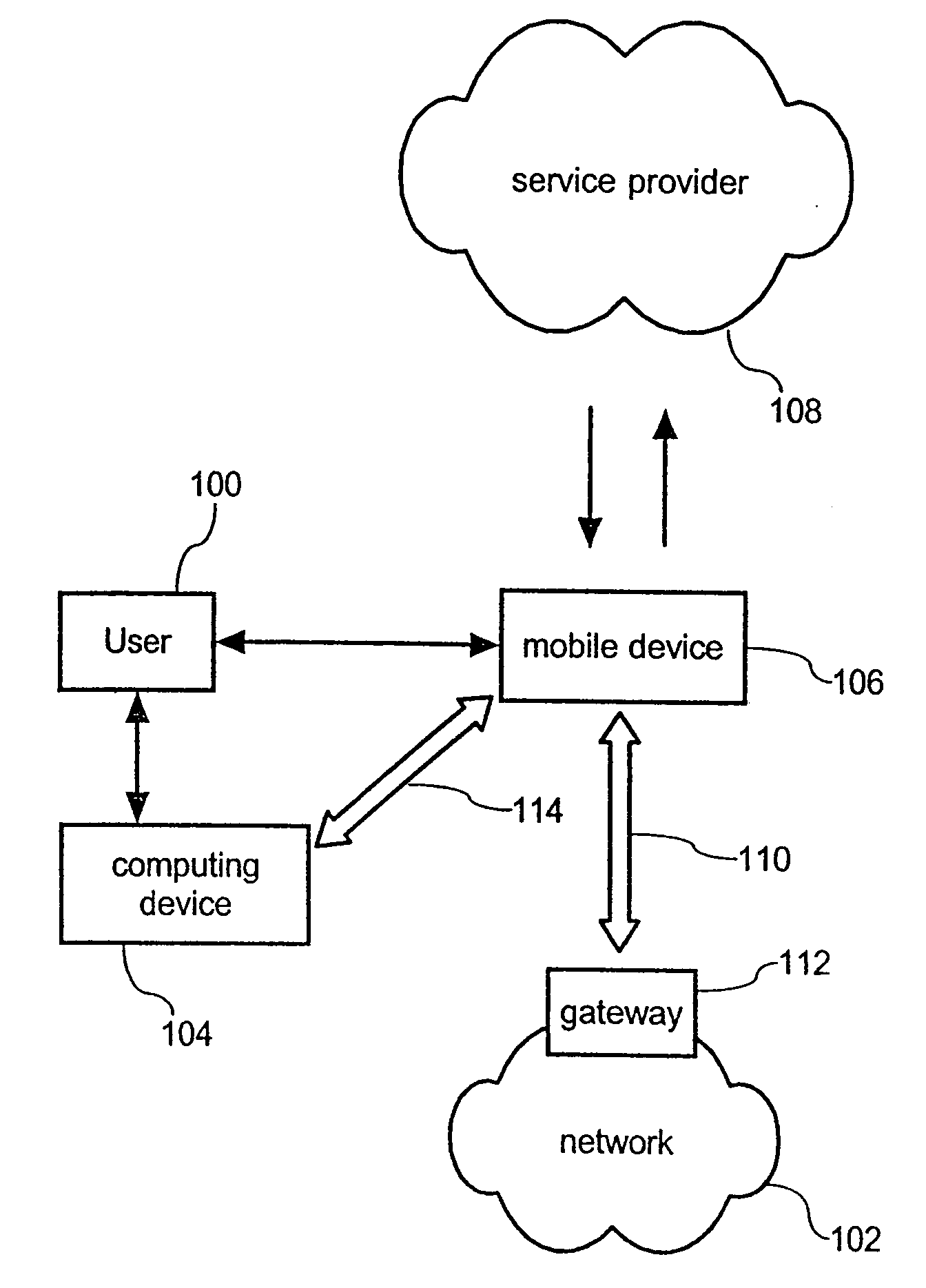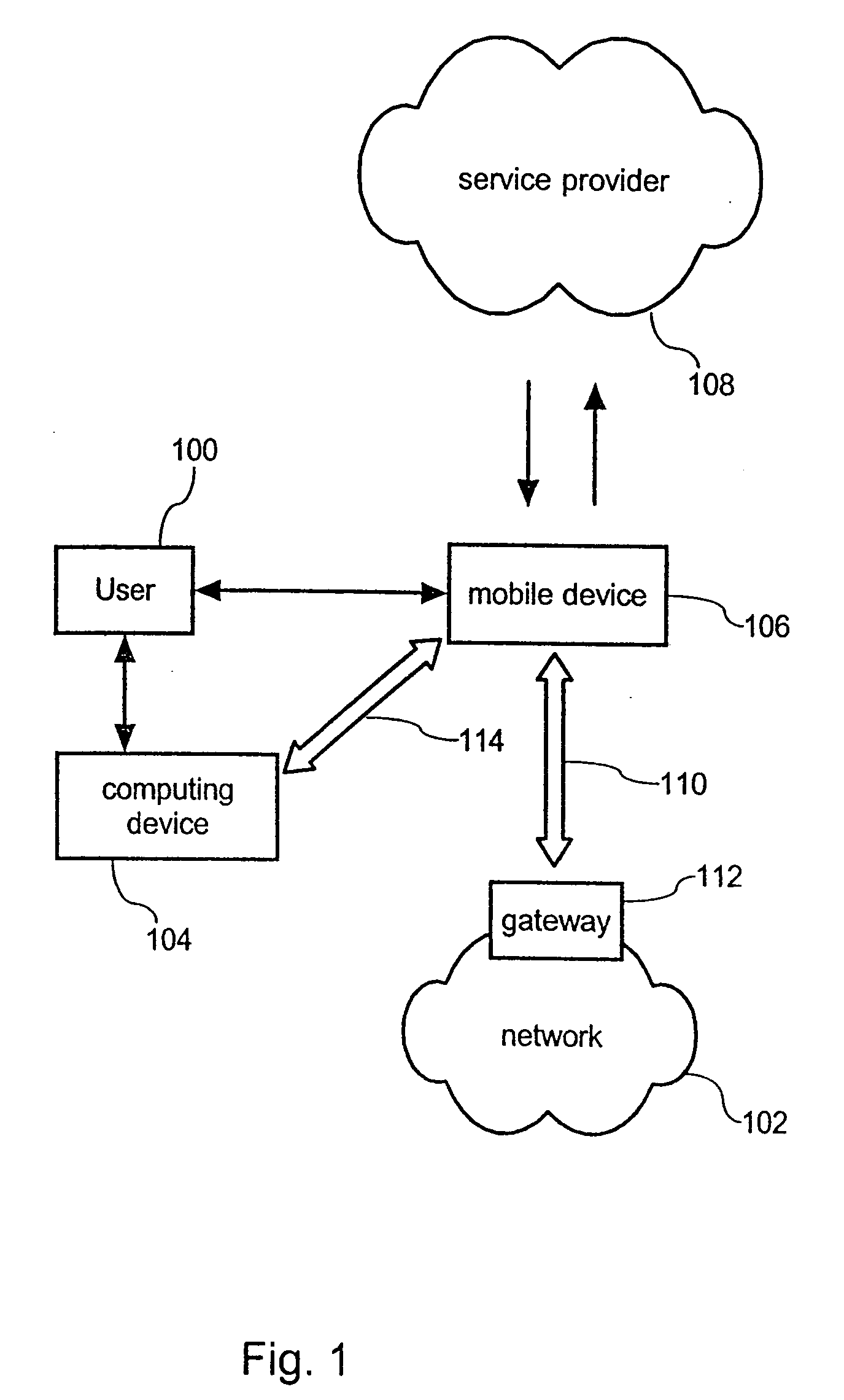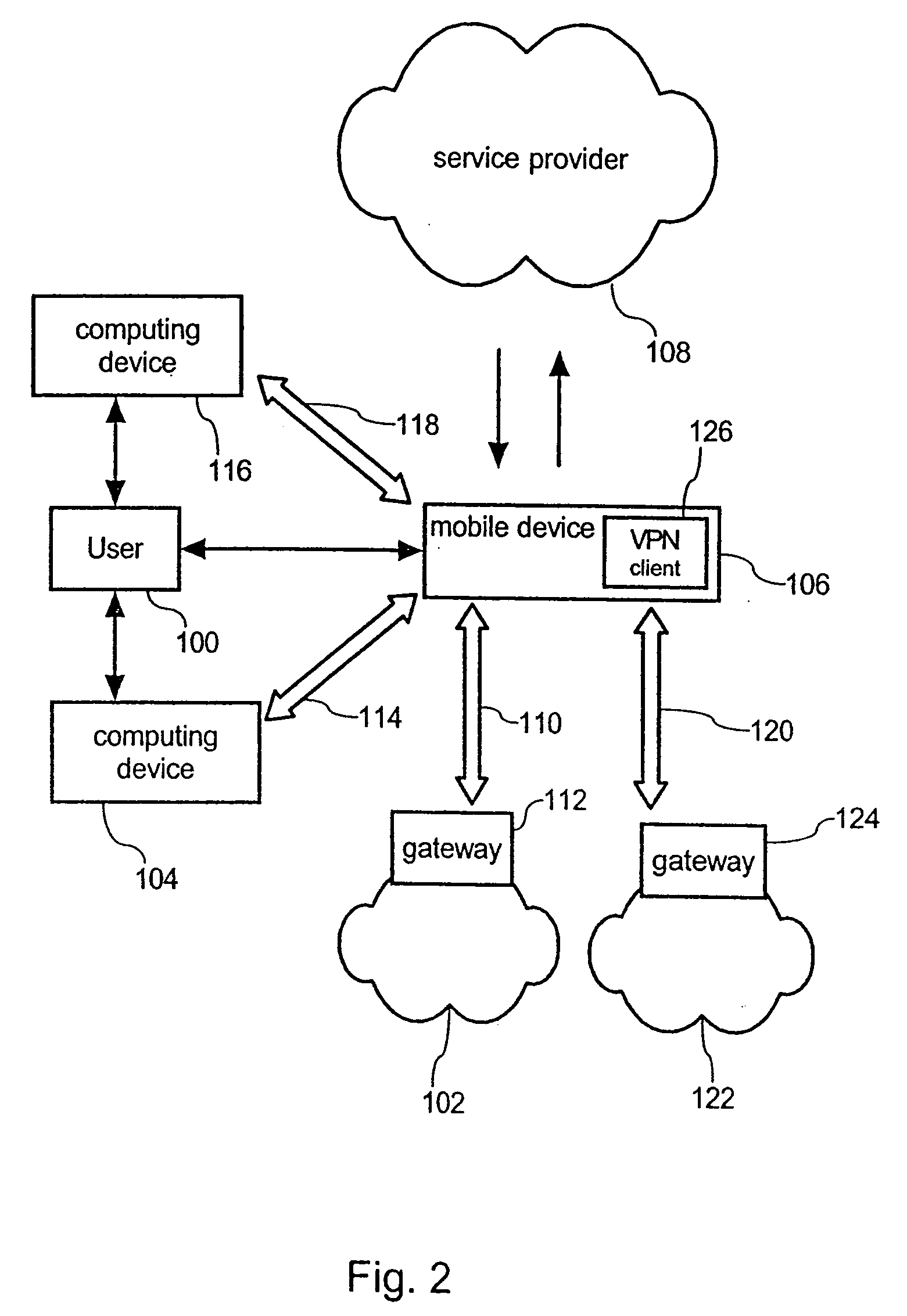Mobile authentication for network access
- Summary
- Abstract
- Description
- Claims
- Application Information
AI Technical Summary
Benefits of technology
Problems solved by technology
Method used
Image
Examples
Embodiment Construction
[0049]FIG. 1 schematically illustrates an environment or infrastructure for realizing the inventive authentication method. A user 100 wishes to access a network 102 via a computing device 104. The user 100 further has access to his personal mobile device 106 that is in turn adapted to communicate with the service provider 108 and to establish an IP-based connection to the network 102. Accessing the network 102 requires authentication to the network 102. This authentication is typically performed by the network gateway 112.
[0050] Upon successful authentication to the network 102, the mobile device 106 establishes a connection 110 to the network 102 as well as a connection 114 to the computing device 104. Hence, the functionality of the mobile device 106 is twofold. On the one hand it provides submitting an access request to the service provider 108 and receiving a temporary and / or one-time password from the service provider in order to authenticate the user 100 to the network 102. O...
PUM
 Login to View More
Login to View More Abstract
Description
Claims
Application Information
 Login to View More
Login to View More - R&D
- Intellectual Property
- Life Sciences
- Materials
- Tech Scout
- Unparalleled Data Quality
- Higher Quality Content
- 60% Fewer Hallucinations
Browse by: Latest US Patents, China's latest patents, Technical Efficacy Thesaurus, Application Domain, Technology Topic, Popular Technical Reports.
© 2025 PatSnap. All rights reserved.Legal|Privacy policy|Modern Slavery Act Transparency Statement|Sitemap|About US| Contact US: help@patsnap.com



